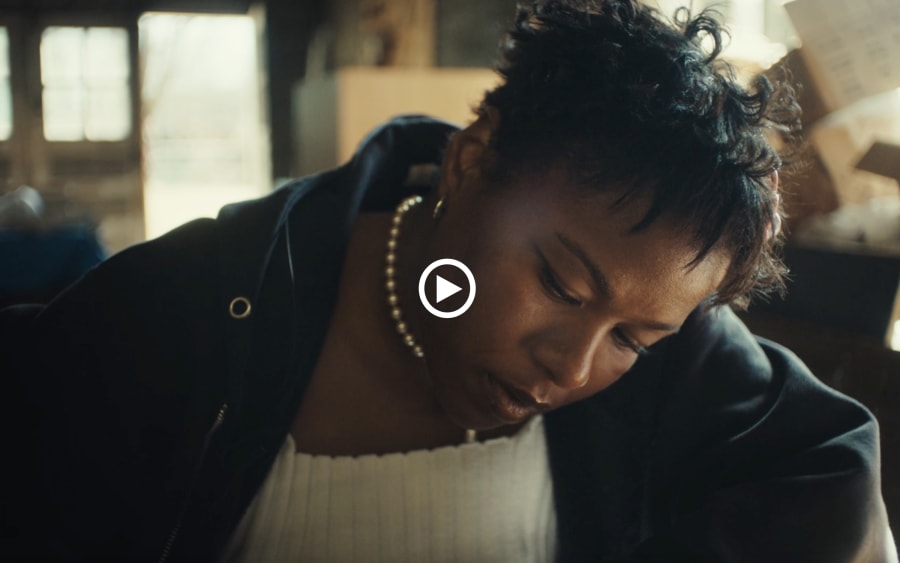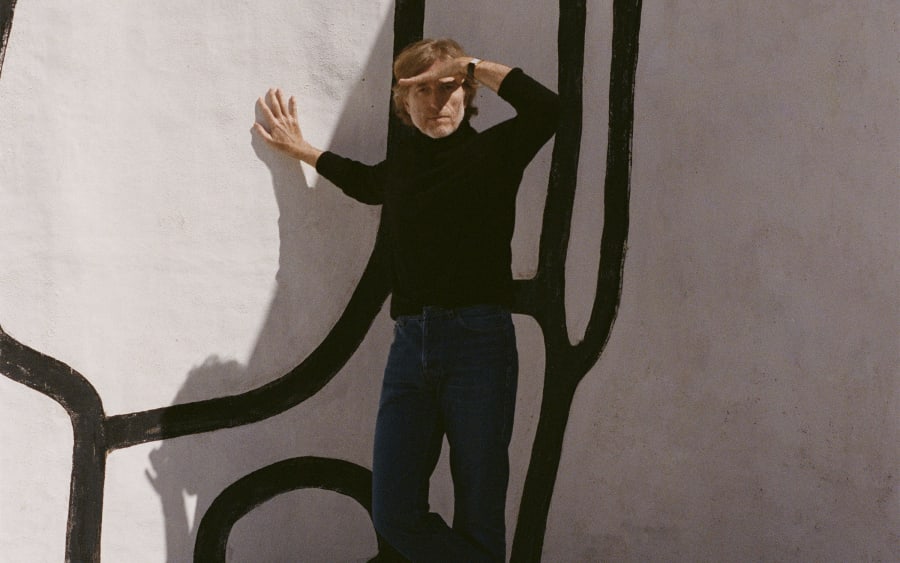At this year’s Art Basel in Basel, galleries are showing a number of young artists working in a variety of media – from text and video to painting and installation – whose international perspectives provide rich and dynamic reflections on contemporary culture. Keep an eye out for these eight new voices presented across the Statements, Galleries, and Kabinett sectors of the show.
Artist and author Omyo Cho (b. 1984, South Korea) pens science-fiction stories and translates them into sculptural works. Cho’s solo presentation with Wooson Gallery (Daegu, Seoul) in Statements offers a visual interpretation of her dystopian novel Memory Searcher (2022). The book’s plot revolves around the concept of memory transference – a phenomenon in which a recollection can be shared or ‘traded’ with another being – and is based on a neuroscience experiment involving nudibranchs, a type of sea slug. During the study, scientists found that a nudibranch reacted in the same way as another via RNA transfer without having actually experienced the same trigger, resulting in the theory of ‘vicarious sensations.’ Cho’s new work, Nudi hallucination (2024), reinterprets the novel as a delicate installation of biomorphic shapes made from industrial materials such as stainless steel and surgical chains, as well as glass, silver, and resin pigment. While envisioning technologically advanced future phenomena, Cho speaks to how that future is already here, with social media enabling us to live vicariously through others.
With an artistic practice also rooted in extensive writing and research, Tiffany Sia (b. 1988, Hong Kong SAR) is concerned with material culture and media circulation in relation to governance and power. Her Art Basel debut with Felix Gaudlitz (Vienna) in Statements is an installation comprising three parts: a book, a short film, and a video-sculpture. The book, On and Off-Screen Imaginaries (2024), is a collection of essays by Sia exploring the geopolitics of cinema, while The Sojourn (2023) is a short film shot in Taiwan that references the road movie and martial arts genres, set against a landscape with contested geopolitical histories. For the video-sculpture Antipodes III (2024), a recorded live stream of a landscape on the island of Kinmen is screened in a rearview mirror, framing another unsuspecting geography to examine the area's colonial and military tensions and histories. Simultaneously, the piece – and the series it builds on – references an observation once made by media theorist Marshall McLuhan: ‘We look at the present through a rear-view mirror. We march backwards into the future.’
Referencing cinematic histories in his own way, Ana Segovia (b. 1991, Mexico) creates dramatic oil paintings. His presentation with kurimanzutto (Mexico City, New York) in Kabinett features new works from the series ‘Noche Americana’ (2024), with each painting based on stills from films produced during the Golden Age of Mexican cinema, a time of cultural renaissance and filmic innovation. The coloration, meanwhile, references the cinematic technique of ‘day for night’, which involves simulating a night scene while filming in daylight. With figures rendered in high contrast and clearly outlined yet with obscured facial features, Segovia’s scenes of various social gatherings emphasize expression through body language and gestures. Also finding inspiration in the Western genre, his paintings seek to explore identity, gender, and class stereotypes as illusionary performances.
Transdisciplinary artists Flo Brooks (b. 1987, England) and La Chola Poblete (b. 1989, Argentina) both examine cultural and gender identities in expansive ways. Brooks’s practice is characterized by vivid assemblages in which the artist appliqués acrylic paintings onto found fabrics and metals. Their presentation in Statements with Project Native Informant (London) showcases five of these tapestry-like works, which draw from the artist’s Queer ancestry to challenge traditional genre painting through a self-reflective lens. Building upon the pieces shown and themes explored in their 2023 exhibition ‘Harmonycrumb’ at Spike Island in Bristol, the works honor gender-nonconforming histories, with each tapestry dedicated to a historical trans figure.
La Chola, on the other hand, works with painting and sculpture to champion Indigenous Argentinian narratives and ancestral knowledge. In her works included in this year’s Venice Biennale, she fuses the iconography of the Virgin Mary with Pachamama, a Mother Earth-like goddess revered by the Indigenous Andean community. For her solo presentation, titled ‘Santa María’, with Barro (Buenos Aires, New York) in Statements, La Chola has created a wall installation with an iron frame in the shape of a Christian altarpiece and two female figures sculpted from bread. Wearing only wigs and stilettos, the women suggest the exoticization of Indigenous peoples, while silhouettes of pitchforks and arrows point toward them, alluding to violence inflicted upon marginalized communities.
Taking on a more abstract approach to incorporating religious iconography is Barbara Wesołowska (b. 1984, Poland), whose paintings presented by Galeria Stereo (Warsaw) in Statements depict fragmented, obscured faces with an unsettling, murky palette. Inspired by psychoanalytic theory and the religious art that she experienced as a child being raised in a strict Catholic family, Wesołowska paints figures who appear suspended between states and never look directly at the viewer – much like many depictions of the Madonna or saints. The titles of the paintings, such as Permission (2024) and Litany (2024), point further to these references.
Two other artists making their debuts in Basel this year are figurative painters Louise Sartor (b. 1988, France) and Somaya Critchlow (b. 1993, England). Sartor’s small-scale paintings, shown by Crèvecœur (Paris) in the Galleries sector, draw from images found online and photographs taken by the artist to depict snapshot-like, anonymous moments. The closely cropped gouache works are rendered on recycled cardboard, a material that reveals itself in Read at 19:20 (2023): In this alluring painting of two girls stepping out into the rain, a cardboard flap is raised and used as the surface for the depiction of a reflective, wet ground. Another painting, Bike (2023), includes a pair of red lace underwear affixed to the cardboard’s surface, a cheeky addition matching the undergarment worn by the painting’s subject.
Critchlow’s paintings are similarly bold in their intimate renderings of female nudes, centered on the Black figure. The works presented in the Galleries sector by Galerie Gregor Staiger (Zurich, Milan) showcase the development of the artist’s practice, from smaller-scaled drawings to more recent, medium-sized paintings. Scream III (2023), an intimate watercolor on paper in shades of grey, depicts a woman grasping her bosom with a provocative expression, looking directly at the viewer. Drawing inspiration from pop culture and life studies, Critchlow’s seductive and resolute subjects in domestic interiors are exercises in self-perception and celebrate voluptuaries.
Annette An-Jen Liu is a Taiwanese writer and curator working between Taipei and New York City. Her writing can be found in ArtAsiaPacific, Art Monthly Australasia, Magnum Photos, Ocula, and Musée Magazine, among others. She is a 2023 recipient of the Andy Warhol Foundation Arts Writer Grant and manages projects at Cai Studio.
Caption for top image: Ana Segovia, NOCHE AMERICANA I: Push In II (detail), 2024. Courtesy of the artist and kurimanzutto.
Published on May 22, 2024.


